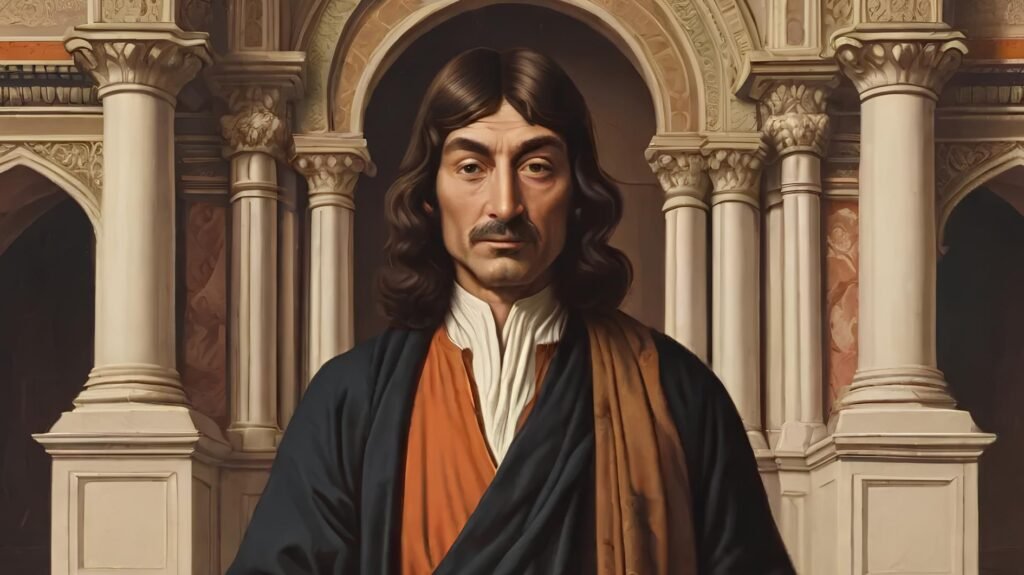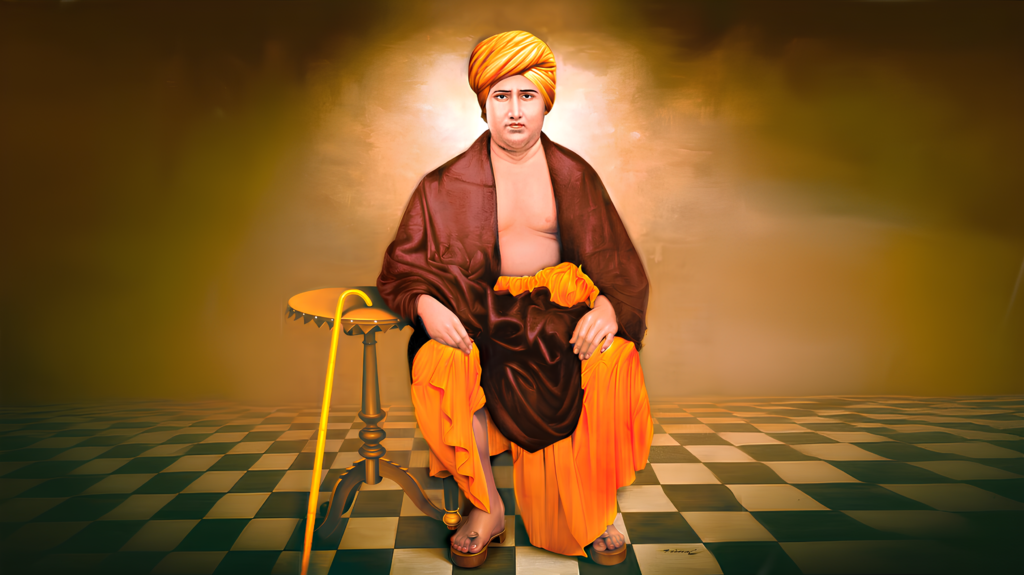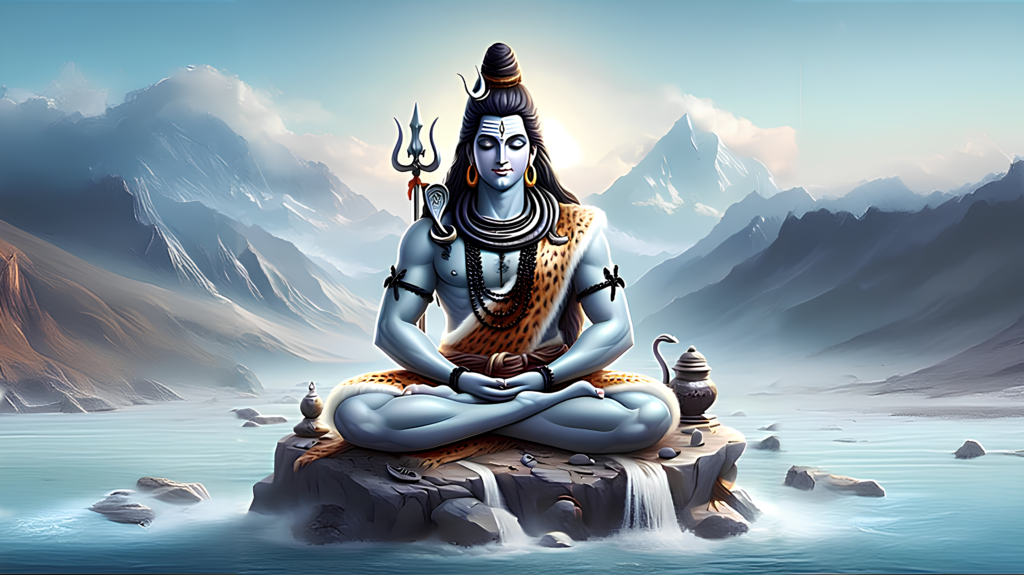How Samkhya Philosophy Solves Descartes’ Mind-Body Problem

Namaste Shikshanarthis!
Imagine you’re sitting comfortably in a room, and you decide to reach for a book on the table. You think about it, and your hand moves to pick it up. But have you ever wondered how a simple thought in your mind can make your body act in a specific way? This puzzling question is part of what philosophers call the “mind-body problem.” René Descartes, a famous French philosopher from the 17th century, grappled with this problem and proposed that the mind and body are separate entities that interact in mysterious ways. But what if there’s a different perspective from an ancient Indian philosophy that could shed new light on this issue? Let’s first understand what actually Descartes’ Mind-Body Problem is!
Descartes’ Mind-Body Problem
Dualism: The Mind and Body as Separate Entities
René Descartes was a philosopher who lived in the 1600s. He was deeply interested in understanding the nature of reality and how our inner thoughts connect with our physical actions. Descartes introduced the idea of “Dualism,” which suggests that the mind and body are completely separate from each other. According to him, the mind is a non-physical entity where our thoughts and consciousness reside, while the body is a physical entity that interacts with the material world.
For Descartes, the mind is like a ghost inside a machine. It can control the machine (the body) but is not a part of it. This raises a fundamental question: if the mind is non-physical, how does it affect the physical body? Descartes struggled to answer this question, leaving the relationship between mind and body somewhat mysterious.
Douglas Long’s Car Analogy for Mind-Body Dualism
In 1969, scholar Douglas Long penned a compelling paper that delved into the intriguing concept of mind-body dualism. He proposed a thought-provoking idea: if we can imagine ourselves as conscious beings without a physical body, then it must be possible for us to exist without one.
To make this abstract notion more tangible, Long offered a relatable example. Picture a car. Now, imagine this car without wheels. Despite the absence of its wheels, it remains a car. The wheels, while important for the car’s function, are not essential to its identity as a car.
In the same way, Long argued, we can imagine a mind existing without a body. This suggests that the mind and the body are two distinct entities. Just as the wheels are not intrinsic to what makes a car a car, the body is not intrinsic to what makes the mind the mind.
According to Descartes, the driver (the mind) controls the car (the body), but they are fundamentally separate. The driver’s thoughts influence the car’s movements, but the exact mechanism of this interaction is unclear. This separation between the mind and body is what makes the mind-body problem so intriguing and challenging.
Samkhya Philosophy: An Ancient Indian Insight
What is Samkhya Philosophy?
Samkhya philosophy dates back thousands of years and is one of the six classical schools of Indian philosophy. It provides a detailed explanation of how the mind and body are connected, offering insights that contrast with Descartes’ Dualism.
Now, let’s travel back to ancient India and explore a different perspective on the mind-body problem. Samkhya is a traditional Indian philosophy that offers a unique way of understanding the relationship between the mind and body. Unlike Descartes’ idea of separation, Samkhya provides a framework that redefines how consciousness and the physical world interact.
Purusha and Prakriti: The Two Key Elements
In Samkhya philosophy, there are two fundamental concepts that help explain the nature of reality:
- Purusha: This represents pure consciousness or awareness. Purusha is the observer, the unchanging witness to all that happens. It is separate from the physical world and remains constant and unaffected by the events around it.
- Prakriti: This represents the physical world, including the mind, body, and everything that changes and evolves. Prakriti is the material world, made up of various elements and energies that interact and transform over time.
To visualize these concepts, think of Purusha as a person sitting in a movie theater. This person watches the film on the screen but does not influence or change the film. The film itself, which shows all the action and drama, represents Prakriti. Watch videos on Samkhya Darshan to gain a deeper understanding.
The Mind in Samkhya
In Samkhya, the mind is part of Prakriti. It consists of different components:
- Manas: This is the part of the mind that processes sensory information. It helps us perceive what we see, hear, and feel.
- Buddhi: This aspect of the mind is responsible for intellect and decision-making. It helps us understand and make judgments about the world.
- Ahamkara: This is the ego or sense of self. It creates our personal identity and helps us distinguish ourselves from others.
In Samkhya philosophy, the mind is not a separate entity but an integral part of Prakriti. It functions according to its own nature and interacts with the physical world.
The Car Analogy in Samkhya
Let’s use the car analogy again, but this time with Samkhya’s perspective:
- Purusha is like a passenger sitting quietly in the car.
- Prakriti is the car itself, including the driver and its engine, wheels, and all its parts.
In this view, the car (including driver) operates on its own according to its design and mechanics. The passenger (Purusha) observes the journey but does not influence the car’s movements. The car drives and functions according to its own nature, and the passenger simply witnesses the ride.
So, In René Descartes’ model, objects like a car are seen as part of the material world and can exist independently of their function, as long as they fulfill their physical properties. According to Samkhya philosophy, however, the existence of something like a car is inherently tied to its purpose—serving someone, such as the passenger in the backseat. In this view, even the driver is considered a part of the car’s overall function. To master Samkhya philosophy, enroll in our Samkhya Darshan course, where all 72 Samkhya Karikas by Ishwar Krishna are thoroughly explained.
How Samkhya Philosophy Solves the Mind-Body Problem
Understanding the Connection
Samkhya philosophy offers a solution to the mind-body problem by redefining the relationship between consciousness and the physical world. Instead of viewing the mind and body as separate entities that interact in mysterious ways, Samkhya sees them as aspects of a unified reality. According to Samkhya, Purusha (the observer) and Prakriti (the physical world) are distinct but interconnected. Purusha remains separate and unchanged, while Prakriti includes everything that evolves and transforms, including the mind and body. The interaction between mind and body is not about one controlling the other but about observing and experiencing a unified reality.
The Role of Purusha and Prakriti
In Samkhya, Purusha and Prakriti work together but remain distinct. Purusha is the silent observer, while Prakriti encompasses everything physical which serves Purusha. The mind and body (Prakriti) operate according to their own rules, while Purusha observes without interfering. This approach helps avoid the problem of how a non-physical mind could affect a physical body. You can
Conclusion
The mind-body problem, as explored by René Descartes, is a complex question about how our thoughts and physical actions are connected. Descartes believed that the mind and body are separate entities that interact in mysterious ways. He saw the mind as a ghost controlling the body, but this interaction remained unclear.
The ancient Indian philosophy of Samkhya offers a different perspective on this issue. Samkhya explains that the mind and body are not separate entities but parts of a unified reality. Purusha, the observer, watches the changes in Prakriti, which includes the mind and body. Rather than seeing the mind as controlling the body, Samkhya suggests that Purusha remains separate and unaffected, while Prakriti operates according to its own nature. By exploring Samkhya philosophy, we gain a new understanding of the mind-body connection. This perspective helps us see that consciousness and the physical world are intertwined in a way that avoids the complications of separate realms. Through this ancient wisdom, we can appreciate the deep and interconnected relationship between our thoughts and actions. The insights from Samkhya offer a valuable addition to our understanding of how we experience and interact with the world around us.


